The Gift of South Dakota
Subscriptions to South Dakota Magazine make great gifts!
Subscribe today — 1 year (6 issues) is just $29!
Making Hay
Whenever I glanced toward the highway, its glare nearly blinded me. Profiled faces were silhouettes in stone behind winking windshields. I wanted to scream in their ears, or maybe whisper to startle them. I wanted to make those drivers jam their right foot hard on the brakes, jerk their sunglasses off, and look out over the dusty alfalfa fields where I sat on my tractor, yelling.
There I was in the hayfield, 47 years old, bouncing along eating dust on a little 420 John Deere tractor my father bought on my 14th birthday. The 420 was our newest tractor, making it an antique to equipment salesmen, which explained why they hadn't called us lately. To pass time, I imagined what I'd say if someone actually stopped to talk. Conditions weren't conducive to reasoned discourse.
Pay attention! I'd bellow. I'm doing this so you can eat! In a rational tone, I'd add that you should watch out for folks like me as you drive the highways in your air-conditioned car. Look for the man, woman, or child on a tractor, hat pulled low, and back bowed to the blazing sun. Trying to drive the pleading tone from my voice, I'd add that we're making hay to fill the bellies of calves out on the hillside, to feed them fat through a long, cold winter.
What do you care? My voice might rise, my throat tighten. You'll be snug in your houses and offices when the blizzards arrive, or edging along the highway again, cursing the ice and yourself for forgetting snow tires. We'll be out here, in bone biting cold, riding the same Popping Johns and loading the hay we're cutting now. We'll be here, muscles straining to lift the pitchfork full of hay, to pitch it off the rack for cows running behind. Every effort we make is manufacturing beef. We do this so you can fill your bellies.
One day you'll go to the supermarket and choose a fine cut of steak, juicy and red, or shape hamburger to fry, mouth watering as it pops in the pan; if you're watching your cholesterol, you'll drain the grease. You can do this because we're here, in this hot noon, making hay. If you can't see us as you drive by, imagine our squint into the sun, which burns those grimaces against dust and heat into lines our faces will wear all our lives. When you see us in town, and notice how old we look, you shake your heads and wonder why we put up with such a hard life. Or grin and remark that we've never heard of makeup.
Listen to me. I've spent 10 hours on this tractor today, the engine popping steadily, deafening; the muffler fell off years ago. It's 104 degrees, with a wind blowing gritty dust into my teeth. I'm not doing this just because I'm not smart enough to get a job in town.
I began driving the mower tractor the year I turned 14, proud to replace, with my skinny body, the unreliable hired men. Each year I relearn intricate steps to start the motor because the generator didn't last past my 16th birthday. I tighten bolts like the one that whizzed past my ear last summer, check connections, hydraulic fluid, mower parts. Sweat runs out from under my hat, stings my eyes, makes me think there's a wasp in my pant leg.
Making hay in summer is mental and physical torture, and traditional as religious rites. My parents, with my husband and me, spent 10 years together operating a small family ranch in western South Dakota. My father, whose father left the shoe making profession in Sweden to homestead this land in the late 1800s, was conservative politically and economically. His primary rule of ranch management was "Never Spend Any Money." Translated into practicality, that meant we never spent a dime for anything we could do ourselves.
Making hay with old equipment meant we were using outdated methods, and were never typical representatives of high-tech "agribusiness," a terrible word for an evil trend. None of us owed anyone money; we paid our taxes on time. Both couples took vacations yearly — not all of our neighbors with shiny new air-conditioned tractors could make those claims. But many of them have done less labor as they moved into the modern age. First they bought a "side delivery" rake, a long implement with rotating toothed wheels that swept the hay into queues the length of the field, making big, even hay bundles.
Meanwhile, we drove an old tractor towing a short dump rake. This model of tractor, designed with its two front wheels close together, was known for its ability to kill ranchers. When I hit the throttle, it leapt in the air, looking around for a hole to drop its front wheels into so it could tip over and break my neck. I never flipped it, but the summer a neighbor used it to put up our hay when I was occupied elsewhere, he rolled it twice on flat ground and survived. On later models, the front wheels are set nearly as far apart as car wheels for greater stability.
To use our old dump rake, I sat sideways on the rusty metal seat, steering with my left hand while I looked over my left shoulder to gauge when the rake teeth filled with hay. At that moment — and before the rake began to slide over hay on the ground — my right hand yanked hard on a rope that pulled a lever and dumped the hay. After an hour, my neck and shoulders hurt from twisting to watch the rake behind and the tractor's path ahead — and I'd usually hit a couple of holes or boulders. My hand was blistered; and my arm ached from pulling the dump rope.
A few years after I started haying, the neighbors bought a windrower, a top-heavy machine that mowed hay in swathes 12 feet wide, gathering it in the same operation, and leaving neat rows around the field. The operator sat high on the machine where he could look down on me, probably chuckling, as I tightened bolts and greased zerks on my old 9-foot mower. I'd climb on the tractor and mow around and around the field three hours, unless I broke a sickle tooth, or mower guard, or a bolt snapped.
Then I'd unhook the mower, attach the rake, and drive around in circles for another couple of hours to windrow my hay. Meanwhile, the neighbor started piling hay while I was still mowing, unless he was smart enough to mow another field and let the crop dry out a day before stacking. If he wasn't, his haystacks sometimes burst into flames, spontaneous combustion, because it was stacked too green. In fairness, he might have admitted that I didn't break down any more often than he did. To be really fair, he might have admitted that buying advanced machinery used up a lot more of his cash than we spent repairing our old equipment.
Once hay is mowed and raked, a variety of machinery exists for making the big loaf-shaped piles common to the arid Great Plains. In our case, when I'd half-raked a field, I'd see a glint of light through the dust as the massive old John Deere carrying the hydraulic stacker moved into the field. It's simplest to describe a stacker as a wheeled fork; the teeth operate hydraulically to raise the load to the height of a stack.
My father would drive to a far corner of the field and drop the teeth flat against the ground, then drive toward the spot where he intended to place the first stack. As he drove, trying not to stick the metal teeth in a hole that would bend them, the hay would collect against the back wall of the fork. When he got to the stack site, he'd stop and back up, pushing a lever that caused the push-off to slide the hay off the fork tips. Then he'd turn and drive at a right angle to the rows of hay, returning to pile each load on the first.
Stacking my father's way, however, was much more complex than simply shoving hay into a pile. His progress around the field on the noisy stacker was more like a ballet: he never drove a foot more than necessary to collect the hay and bring it back to the stack. As he delivered hay from alternating directions, he dumped each load so the end crossed the end of a previous load, weaving strips of fodder together at the corners. Integrating the bundles this way made the finished stack firmer. Every three or four loads, he'd lift the teeth enough to dump hay into the center of the square, building it high so it wouldn't collect water in a depression that would rot hay from the core outward. The finished stack might have been shingled, so rightly did the bundles overlap one another, and would shed water for years. Such stacks were also incredibly hard to tear apart with a pitchfork.
The neighbors' next innovation was a device I never envied: a four-paneled fence set up on the site of each stack. Using a stacking fork, they simply dumped hay casually over the fence until it made an untidy pile my father refused to dignify with the term "stack." Then they unhooked the fence connections and dragged the panels to the next site. The hay pile was uneven, haphazard, without layering or the woven corners that would resist wind, snow and water, and much smaller than the monster loaves in our fields.
The neighbors defended this technique by saying they'd feed the hay that winter anyway, so it didn't have to last. The same philosophy has created an entire throwaway economy. And, to continue the social parallel, a lot of the hay blew away before it was used. If we had a wet summer and fall, it was already rotting when they fed it in January. Sometimes it made cattle sick, or killed them. If we didn't feed our stacks during the first winter we knew they'd last awhile.
One winter when I was 40, we tore into a stack built the summer I turned 15. My father used another hydraulic gadget on the tractor to feed hay: the grapple fork. Visualize a hand raised to catch a ball: the curved "fingers" could be raised as the operator drove straight into the stack. Then the fingers closed, holding the hay firmly against the row of bars on the bottom, just as you might pick up a handful of spaghetti. The outside of the 25-year-old stack was weathered gray, a pile of leafless sticks that had shed water like a palm thatched roof in the tropics. Inside, the hay was green and leafy, and smelled as if it was fresh cut. I wouldn't believe it either, if I hadn't stood on the hayrack and pitched it off to cows that filled their bellies with it.
Summer haying was only part of a year-round cycle that turned grass and hay into meat. All winter, either with a tractor, or with a pitchfork and his pickup, my father fed to his cows the hay we put up during the summer. Driving in the country on some March morning, watch for pickups with miniature haystacks in the back moving slowly through pastures along the highway. Look again; the pickup has no driver. The rancher stands in back pitching hay. Behind him, cows stream from all corners of the pasture. New calves, confused by all the action, run back and forth, bawling. When they find their mothers, they curl up to sleep on a ton of hay, until a cow eats it out from under them.
One of my friends tells a story typical of this method of feeding hay. One day her dog, left in the pickup cab, managed by his bouncing around to lock both doors. As the pickup headed down a steep hill, she ran alongside trying to pry open the wing window to get at the steering wheel, and hoping no neighbors drove by. The dog barked encouragement, and the pickup eventually hit a rock big enough to stop it, whereupon she broke the side window and resumed control. She's trying to teach the dog to unlock doors and turn off the ignition, but he’s old and she doesn't have much hope he'll learn these new tricks.
One of ranching's skills is figuring out in the fall how long the hay and winter will last before pasture grasses grow green and tall enough in spring to support the herd. Ranchers who don't keep surplus hay in case they guess wrong can be ambushed by spring blizzards. Entire cattle herds have died when the rancher miscalculated when winter would be finished with him.
In fall, ranchers sell calves six to nine months old; most are bought by feedlot operators who will maintain them through another winter, usually on grain, to produce the fat meat sold to supermarket chains. Some ranchers keep half their calves through another winter, hoping prices will be higher next spring. Meanwhile, each cow protects another calf in her womb.
The meat a rancher eats is nothing more than grass and hay, conveniently packed inside cowhide. By the time meat appears wrapped in cellophane at the grocery store, additional processes have raised the price far above the rancher's costs or profits. Large companies feed expensive, chemical-laden grain, and use hormones to increase weight gain. Cattle that spend months crammed together in a feedlot that may be wet and muddy also receive medication to help the withstand disease, and you also pay for butchering and wrapping, tracking — dozens of other costs.
Increased concern about what we eat has made some changes. A customer who looks hard enough may find grass-fed beef. Cows are ruminants, after all, and like elk, moose and deer, they prefer to wander wide grasslands, selecting their own meals based on their needs. Old-fashioned ranchers like us try to accommodate their natural needs. We use hay only as a winter supplement when natural feed is covered by snow and unavailable. I refuse to eat supermarket beef. Grass-fed meat is healthier. And while chewing a steak, I can picture the hours of haying from which its firm, tasty flesh is made.
Editor’s Note: Linda M. Hasselstrom lives and writes at Windbreak House near Hermosa. This is revised from the July/August 1998 issue of South Dakota Magazine. To order a copy or to subscribe, call 1-800-456-5117.


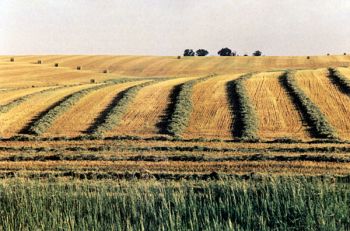
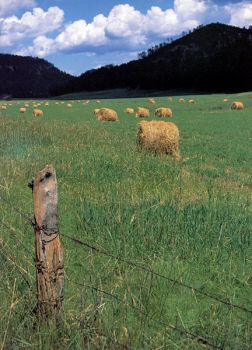
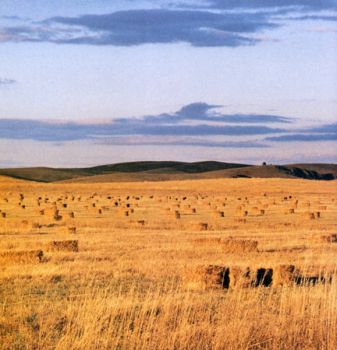
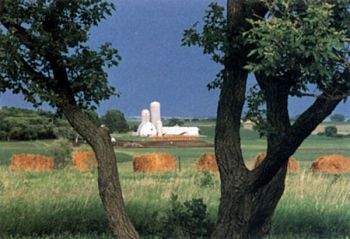


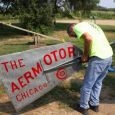

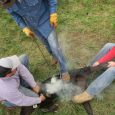
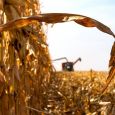


Comments